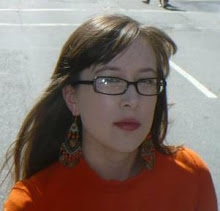Keane and Moran discuss in their essay Television & New Media “in the evolutionary struggle for ascendancy in the new media era, the television industry has developed new engines.”(1) These new engines are meant to hook the viewer so they don’t get bored of a show. On “Next Top Model” the viewers are hooked by the voting off done each week. Every week/episode, another girl gets voted off, so the viewers always want to know who is next to go.
Next Top Model relies a lot on a girl's beauty, based on mostly American and European standards of beauty. For the West African Next Top Model, many girls were blogging about their unhappiness of the show existing in their area. They did not want their fellow Africans to be subjected to the rest of the world's ideas about beauty. Also, the girl must convey sex appeal, which is looked down upon by many religions. One Islamic girl on America's Next Top Model had to break ties with her father in order to participate on the show, because he did not approve of modeling. In Afghan’s Next Top Model, “ten additional contestants dropped out when they heard international press would be there, afraid the increased exposure would mean an increased risk on their lives.”(2) This is because the Islamic culture does not accept women exposing their bodies, and don’t want the women to have much independence.

In Afghan’s Next Top Model, the girls wear their traditional Afghan clothing, which is quite different than in ANTM, where sometimes the girls are wearing no clothing at all. The sets used in the photo shoots can also represent the country the show takes place in. In one episode of ANTM, the theme was the election and the girls posed in places such as voting booths. In another episode, the girls modeled in sets dealing with global warming, and while that is a global problem, it is one America is specifically concerned about.
I think that in some ways, Next Top Model levels the playing field for girls in the sense that their success on the show has nothing to do with how wealthy or poor they are, but how beautiful and talented they are. But the show also creates many divides as well. These girls model clothing made by top designers that only the wealthy can afford, and they do many things on the show that seem to be pure fantastical in respects to how much money it costs to do the things they do. Often times the girls are experiencing many things for the first time, such as traveling abroad, getting escorted everywhere in a stretch limo, eating fine dining, and so on. So this is something that many of the viewers, as well, cannot relate with. However, when looking at the requirements for going to a casting call for “West Africa’s Next Top Model”, the girls are expected to bring a photo or portfolio of herself, which is something that most girls in that region are not able to do. So in that area, only the wealthy girls are going to be able to participate.
(1) Keane, Michael and Albert Moran. “Televsion’s New Engines.” Television and New Media. 9.2 (2008) pg.200
(2) Sharaby, Orli. "Afghanistan's Next Top Model." Psfk. 10 Oct. 2007. Web. 17 Oct. 2009.

